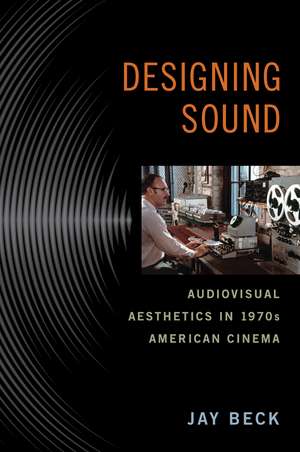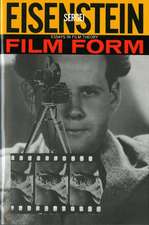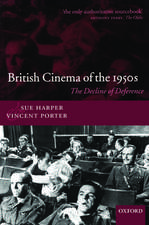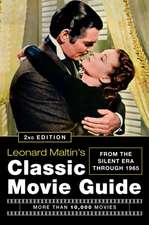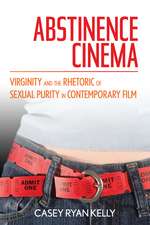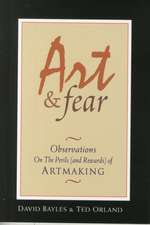Designing Sound: Audiovisual Aesthetics in 1970s American Cinema: Techniques of the Moving Image
Autor Professor Jay Becken Limba Engleză Paperback – 6 apr 2016
The late 1960s and 1970s are widely recognized as a golden age for American film, as directors like Francis Ford Coppola, George Lucas, and Martin Scorsese expanded the Hollywood model with aesthetically innovative works. As this groundbreaking new study reveals, those filmmakers were blessed with more than just visionary eyes; Designing Sound focuses on how those filmmakers also had keen ears that enabled them to perceive new possibilities for cinematic sound design.
Offering detailed case studies of key films and filmmakers, Jay Beck explores how sound design was central to the era’s experimentation with new modes of cinematic storytelling. He demonstrates how sound was key to many directors’ signature aesthetics, from the overlapping dialogue that contributes to Robert Altman’s naturalism to the wordless interludes at the heart of Terrence Malick’s lyricism. Yet the book also examines sound design as a collaborative process, one where certain key directors ceded authority to sound technicians who offered significant creative input.
Designing Sound provides readers with a fresh take on a much-studied era in American film, giving a new appreciation of how artistry emerged from a period of rapid industrial and technological change. Filled with rich behind-the-scenes details, the book vividly conveys how sound practices developed by 1970s filmmakers changed the course of American cinema.
Preț: 288.81 lei
Nou
Puncte Express: 433
Preț estimativ în valută:
55.27€ • 59.10$ • 46.08£
55.27€ • 59.10$ • 46.08£
Carte tipărită la comandă
Livrare economică 17 aprilie-01 mai
Preluare comenzi: 021 569.72.76
Specificații
ISBN-13: 9780813564135
ISBN-10: 0813564131
Pagini: 274
Ilustrații: 25 photographs
Dimensiuni: 152 x 229 x 10 mm
Greutate: 0.37 kg
Ediția:None
Editura: Rutgers University Press
Colecția Rutgers University Press
Seria Techniques of the Moving Image
ISBN-10: 0813564131
Pagini: 274
Ilustrații: 25 photographs
Dimensiuni: 152 x 229 x 10 mm
Greutate: 0.37 kg
Ediția:None
Editura: Rutgers University Press
Colecția Rutgers University Press
Seria Techniques of the Moving Image
Notă biografică
JAY BECK is an associate professor of cinema and media studies at Carleton College in Northfield, Minnesota. In addition to co-founding the Sound Studies Special Interest Group of the Society for Cinema and Media Studies, he is the American coeditor of the journal Music, Sound, and the Moving Image. He has also coedited Lowering the Boom: Critical Studies in Film Sound.
Cuprins
Acknowledgments
1 Introduction: The State of the Art
Part One General Trends (1965–1971)
2 The British Invasion
3 TV and Documentary’s Influence on Sound Aesthetics
4 New Voices and Personal Sound Aesthetics, 1970–1971
Part Two Director Case Studies (1968–1976)
5 Francis Ford Coppola: American Zoetrope and Collective Filmmaking
6 Robert Altman’s Collaborative Sound Work
7 Martin Scorsese’s Dialectical Sound
Part Three The Dolby Stereo Era (1975–1980)
8 The Sound of Music: Dolby Stereo and Music in the New American Cinema
9 The Sound of Spectacle: Dolby Stereo and the New Classicism
10 The Sound of Storytelling: Dolby Stereo and the Art of Sound Design
Notes
Bibliography
Index
Recenzii
“Presenting strong, original research, Designing Sound examines a period of remarkable and often overlooked experimentation with sound in American cinema during the 1960s and 1970s."
"Jay Beck puts in perspective an influential turning point in cinema's storytelling with sound, examining how young directors of the 1970s working with monaural soundtracks took on new aesthetic challenges...a critically important historical work!"
Descriere
Designing Sound demonstrates how Francis Ford Coppola, Robert Altman, and other groundbreaking American directors of the 1970s possessed not only visionary eyes, but also keen ears that enabled them to take cinematic sound design in innovative directions. Offering detailed case studies of key films and filmmakers, Jay Beck explores how sound design was central to the era’s experimentation with new modes of cinematic storytelling and aesthetic sensibilities, from the lyricism of Terrence Malick to the gritty realism of Martin Scorsese.
